Live From US Open 2022: ESPN’s Host, Domestic Broadcasts Go 1080p; Arthur Ashe Feed Upped to UHD
ESPN, USTA, and Gravity Media take onsite production into next era
Story Highlights
The USTA’s transformation of the Billie Jean King Tennis Center production compound and capabilities for the US Open took another step forward this year when coverage on Arthur Ashe Stadium made the leap to UHD and 1080p became the standard on all courts. The result is a world feed that can better meet the needs of global rightsholders as well as a domestic ESPN feed that, though ultimately delivered in 720p, begins its journey with a higher- quality signal. And it has been a joint effort of the USTA, ESPN (which produces the host and domestic feeds), Gravity Media, and NEP.
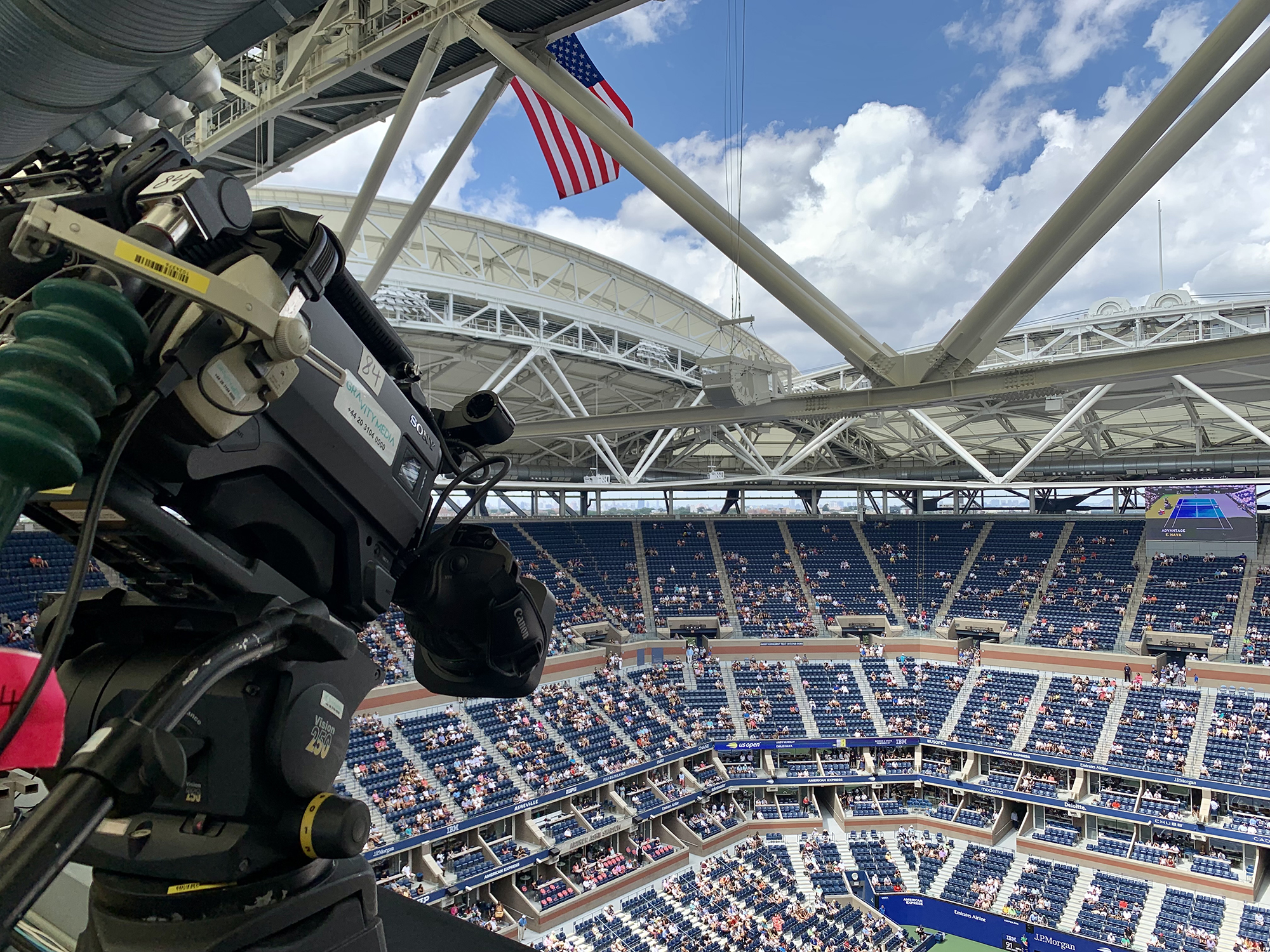
One of ESPN’s 40+ cameras inside Arther Ashe Stadium at the US Open (Photo: Gravity Media)
“As far back as 2015, we planned to go 1080p,” says Sam Olsen, senior remote operations specialist, ESPN. “We designed the system and had agreements in place so that we could flip the switch at any moment. However, doing it all in one go across all 16 courts was quite a challenge. Since the system was built to handle it, though, it was more about configuring the cameras and the detailed planning required for the EVS system to [ensure] we had enough channels available.”
In addition to implementing 1080p on the “show courts” and UHD at Ashe, ESPN has upgraded its ACES automated court-production systems to 1080p for outer-court coverage. And, of course, the network has rolled out even more specialty cameras across the grounds to bring the viewer at home closer to the event.
Getting to this point has been a multi-year effort, but it also was a major consideration for the move to IP and the design of the ESPN and Gravity Media technical facility in 2019. As a result, all the primary equipment — switcher, routing infrastructure, monitoring, cameras — was 1080p-ready prior to this year. With that in mind, ESPN also upgraded several EVS XT3 ChannelMax replay servers to XT-VIA servers to maintain the channel density required for the growing number of super-slo-mo cameras and other needs.
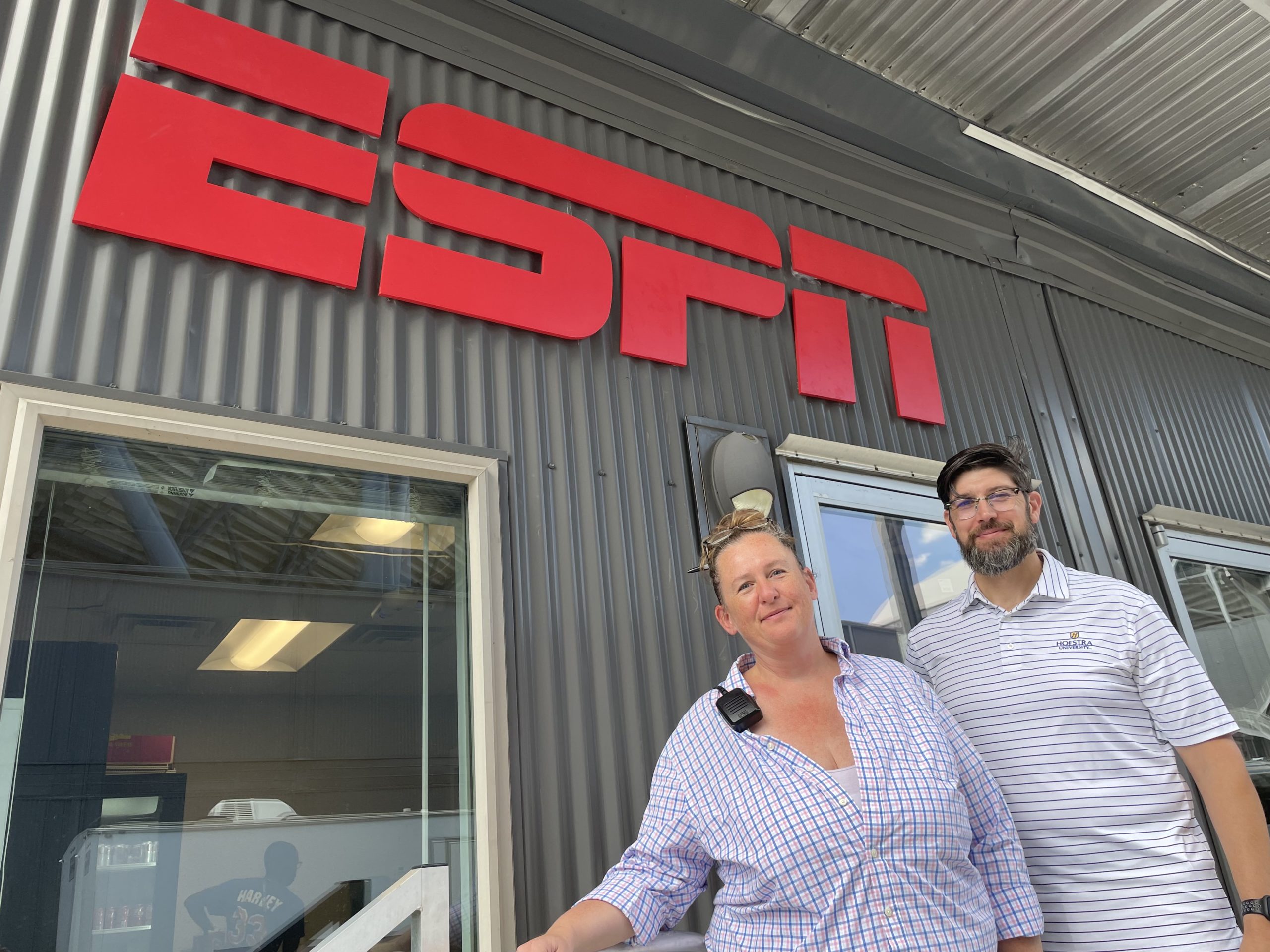
ESPN’s Joa O’Connor and Larry Wilson on hand at the host-broadcast facility near Arthur Ashe Stadium
“As far back as 2015,” says Sam Olsen, senior remote operations specialist, ESPN, “we planned to go 1080p. We designed the system and had agreements in place so that we could flip the switch at any moment. However, doing it all in one go across all 16 courts was quite a challenge. Since the system was built to handle it, though, it was more about configuring the cameras and the detailed planning required for the EVS system to [ensure] we had enough channels available.”
With that in mind, ESPN upgraded several EVS XT3 ChannelMax replay servers to XT-VIA servers to maintain the channel density required for the growing number of super-slo-mo cameras and other needs.
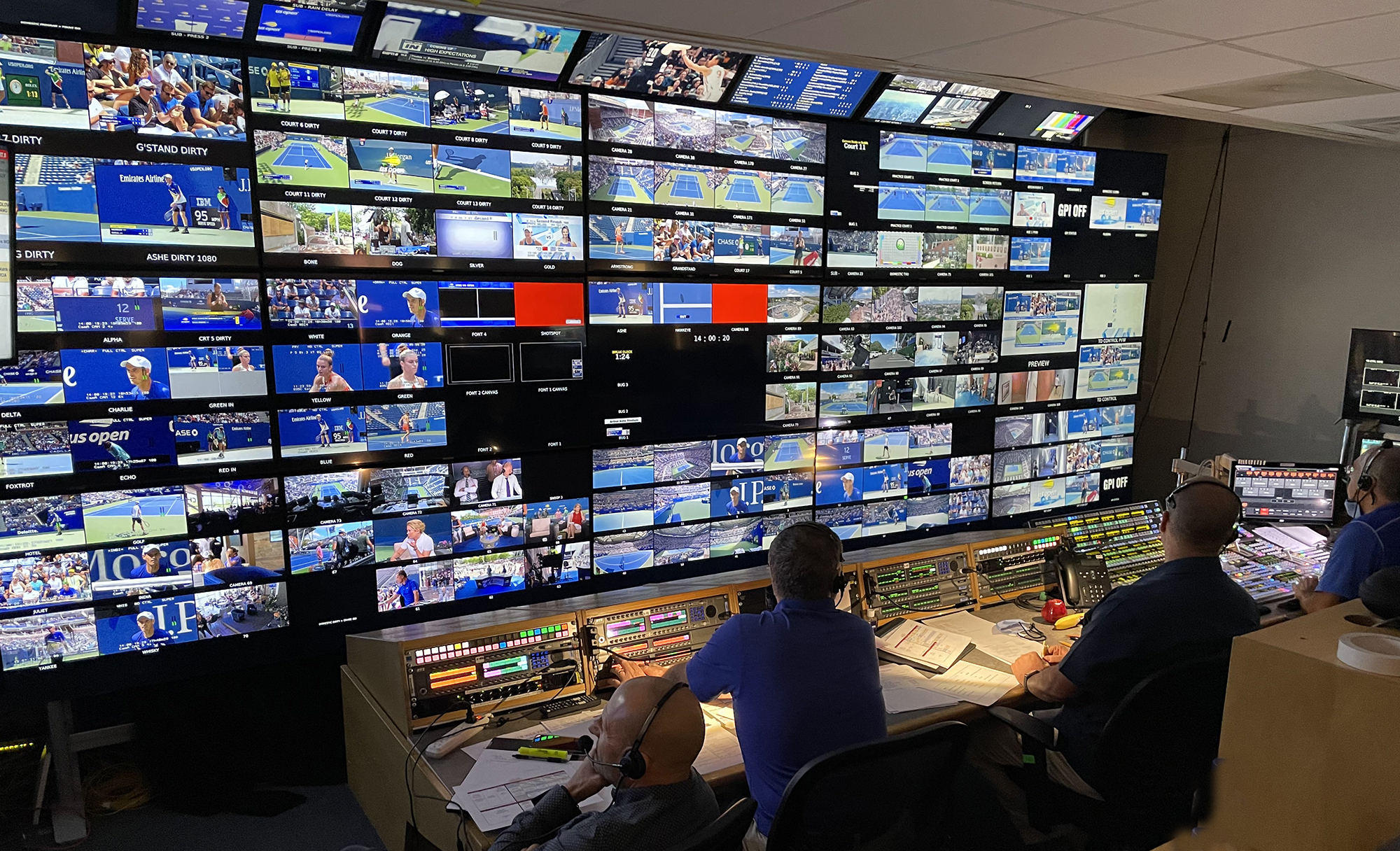
Inside the ESPN’s US Open domestic-broadcast production-control room
“We planned for everything to be able to move to 1080p at some point, so we’ve been ready for this since the beginning,” says Larry Wilson, associate director, remote production operations, ESPN.
ESPN’s IP-based host-broadcast facility is built around a Cisco Nexus 9508 core switcher, with two Nexus 9236C units serving as leaf switches in the TOC and a Lawo VSM IP control system. Gravity installed Grass Valley IQUCP25 gateways at the IP core to provide bridges to the rest of the facility. The Grass Valley Kahuna production switchers (with Maverick panels) and Grass Valley MV-821 multiviewers assigned to the seven production-control rooms at the facility are all IP-native as well.
That core, says Gravity Media Director, Special Projects, Hamish Harris made all the technology leaps possible, including the move to UHD on Arthur Ashe Stadium.
“There was quite a bit of reorganization of the IP core needed, making sure that the bandwidth calculations were done correctly and that we had spread the load across the cards properly,” he says of the move to 1080p and UHD. Much of the cabling throughout the facility also had to be upgraded to accommodate 1080p, and the primary signal-distribution hub was moved from the end of ESPN’s admin building to a more central location.
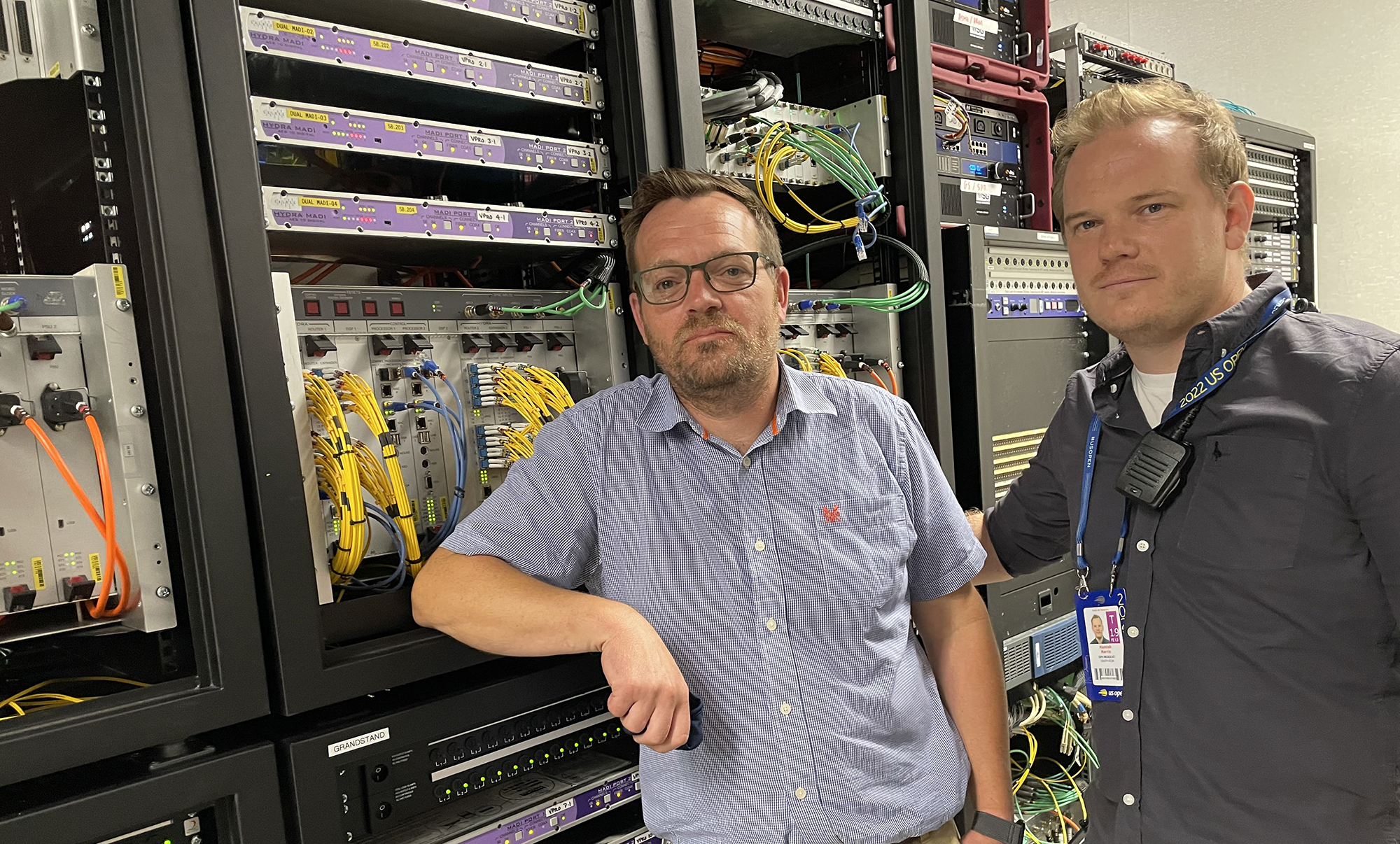
Gravity Media’s John Williams (left) and Hamish Harris inside the equipment room at ESPN’s US Open host-broadcast center
Much of the cabling throughout the facility also had to be upgraded to accommodate 1080p, and the primary signal-distribution hub was moved from the end of ESPN’s admin building to a more central location.
“With the shift to 1080p from 1080i,” Olsen explains, “we had to change the cabling and the length of that cabling. We decided to move the distribution point within the admin building for monitoring and connectivity from the far end to the center of the building. That gave us the opportunity to move a lot of the network cabling into the middle of the admin building as well, so it was all contained in the same space.”
Center Court in UHD: Ashe Gets 4K
With record-breaking primetime ratings thus far, thanks to this being Serena Williams’s final US Open, ESPN is pulling out all the stops for its coverage from Arthur Ashe Stadium. However, even before Williams’s announcement last month, ESPN, Gravity Media, and the USTA were already in the process of upgrading Ashe’s broadcast facilities to 4K UHD (UHD is available in the host feed but not ESPN’s domestic feeds).
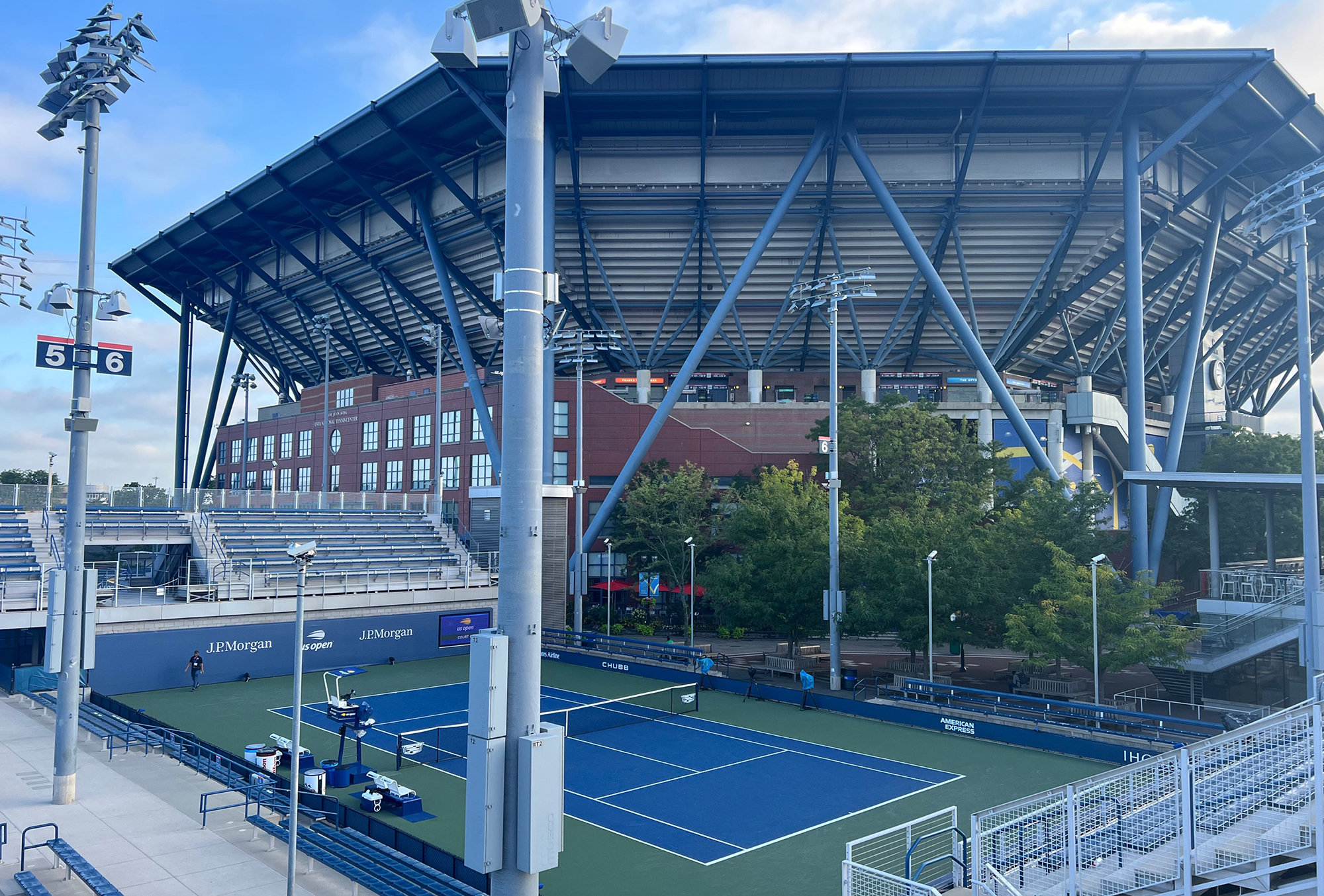
ESPN’s host feed from Arthur Ashe Stadium is being produced in 4K UHD for the first time.
“We were doing this [UHD upgrade] at the same time we were moving everything to 1080p,” says Olsen. “It was a lot to handle all at once. It took some time to identify what would be [native UHD] and what would stay in 1080p, but, aside from EVS [replay], which we’re running in 1080p and upconverting for the UHD show, it’s almost totally a [native-UHD] show.”
ESPN and Gravity Media opted to go with a quad-link model (four 3G-SDI signals bonded together to create a 12G signal) for the UHD production coming out of Ashe.
“Since we went with quad-3G on everything for UHD,” says Harris, “the 3G infrastructure already there is capable of UHD. We upped a little bit of the monitoring and had to add edge resources to account for the extra quadrants, but we really didn’t have to make any major changes.”
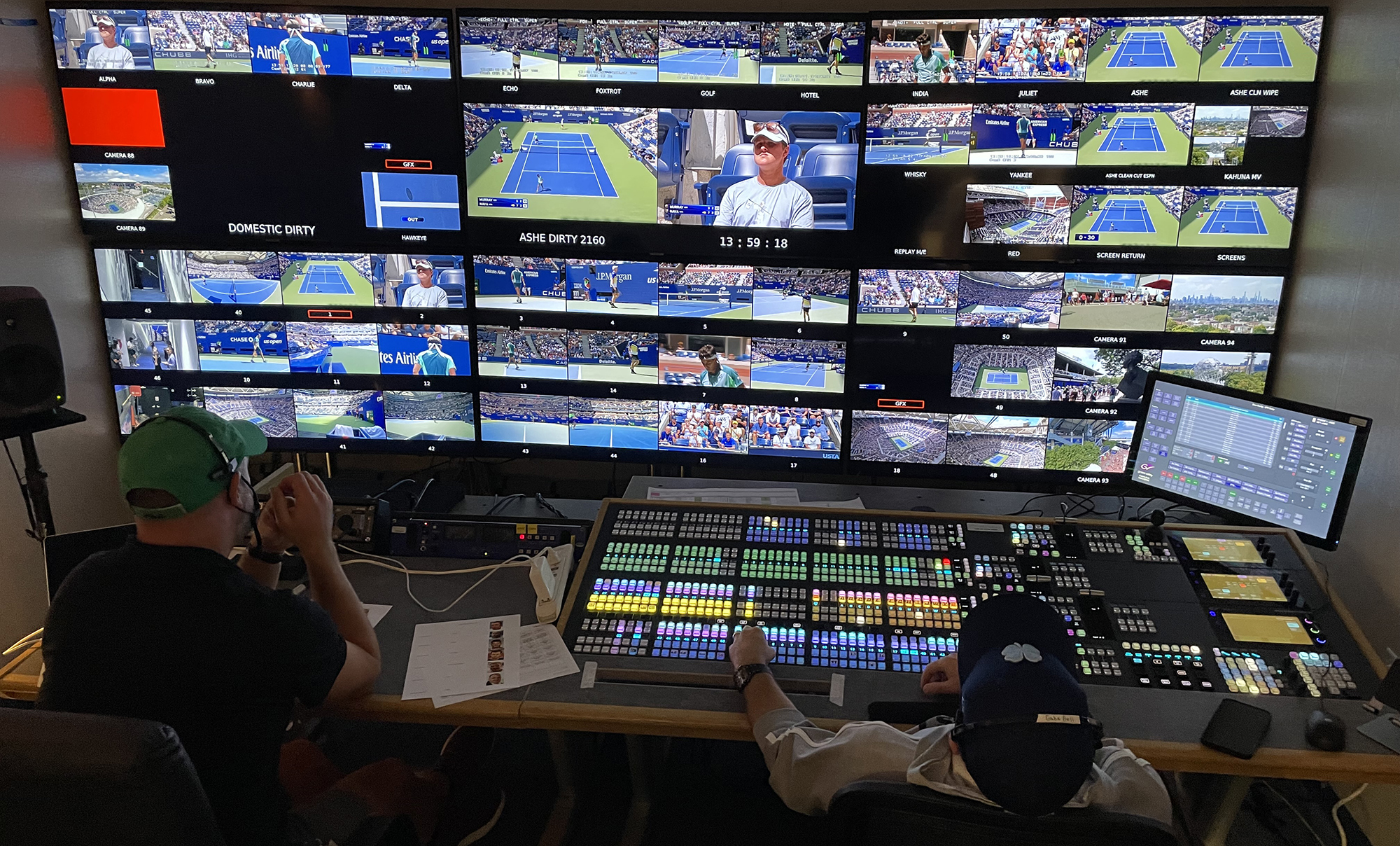
Inside the control room producing the UHD feed from Arthur Ashe Stadium
SMT also was able to provide a native UHD scorebug graphic, and all key and fill graphics are in UHD as well.
The only sources not running in native UHD are the EVS replay operation and a handful of POV and specialty cameras. In these cases, the Grass Valley Kahuna switcher automatically upconverts any incoming 1080p sources, negating the need for ancillary upconverters.
“We’ve actually got more UHD resources than the switcher size,” says Harris, “so we have the Kahuna switcher hooked into the VSM control system, and it’s doing a routed preselect on sources that don’t exist in the switcher. All the primary sources — cameras, graphics, and such — exist within the switcher core. But, if they need ancillary beauty cameras or any of that stuff, it’s all automatically preselected in the router so the switcher will do that automatically. That has really simplified things.”
All broadcast cameras at Ashe are either Sony HDC-4300’s or Sony HDC-P50’s licensed for 4K UHD; some of the specialty cameras are being upconverted from 1080p. Among the 40 cameras at Ashe are a four-point 4K SpiderCam system (a SpiderCam Light system is at Armstrong), eight super-slo-mos, two roving 1080p RF Steadicams (with DTC transmitters), and a jib on the SW roof. New to the party this year, a pair of ATOM one mini 1080p PTZ cameras are affixed to the top of each player’s towel bin, offering an up-close view of the player’s face between points.
“It’s one of those specialty shots where you actually see a player in their own personal quiet moment,” says Jamie Reynolds, VP, production, ESPN. “Typically, [when] a player heads to a towel box, you’re looking at them from behind or from a side angle. Now you’ve got a visceral shot of what their face looks like: if they’re intense, centering themselves, or silently turning into presentation of confidence.”
All ACES: Automated Court-Production Systems Continue To Improve
ESPN also worked with Fletcher and SimplyLive on upgrading its ACES automated court-production systems to 1080p HDR.
The ACES systems, which comprise a Simply Live ViBox production system and four Fletcher robotic cameras per court, were extended to all outer courts last year. In addition, ACES production systems handled US Open qualifying matches last week and will produce the Junior and Wheelchair Championships taking place next week.
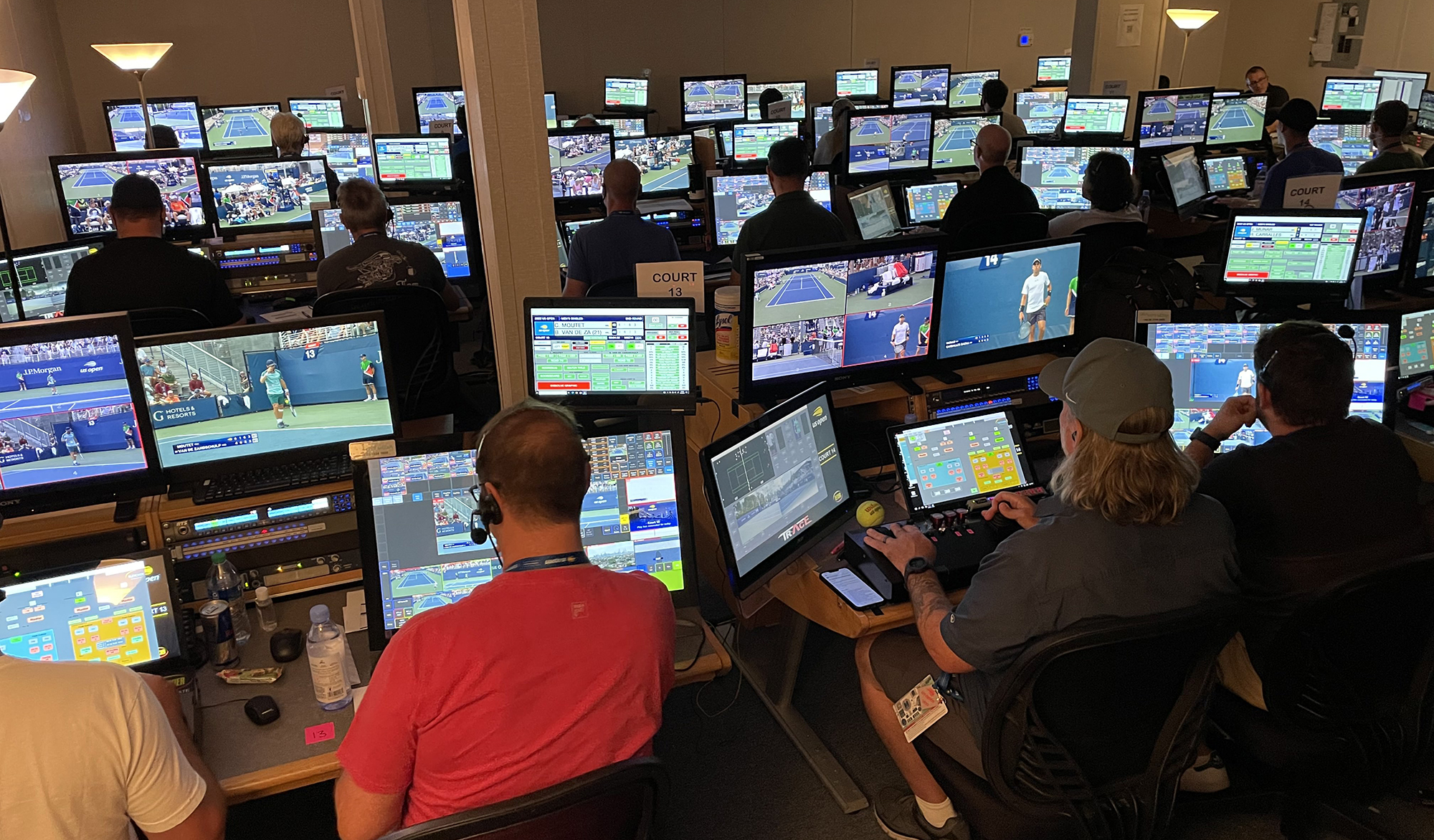
ESPN’s ACES automated-production room is covering the outer courts at the US Open.
“Last year, when we increased the scope of what we were doing with them,” says Wilson, “it was a little tight so, this year, we decided to expand the control room that housed the ACES [production, audio, and video-shading] stations. We moved video into their own location in another room, and that allowed us to add a sixth video workstation. All 14 of the ACES [systems] and the two audio rooms are still in the main room.”
B-Unit Sighting: NEP Supershooter 9 Handles Qualifying, ITV, ‘Cross-Court Coverage’
For the first time, “Cross-Court Coverage” was used during the first two nights of the US Open: ESPN carried action from Arthur Ashe Stadium while ESPN2 focused on Louis Armstrong Stadium and other courts. As a result, ESPN’s production team was suddenly in need of a second control room for its domestic coverage.
Enter NEP Supershooter 9. ESPN parked the mobile unit in the compound to serve as the control room for last week’s linear coverage of US Open Qualifiers, the Cross-Court Coverage on the tournament’s first two nights, and the ITV coverage for DirecTV’s “mosaic” offering each day during opening week.
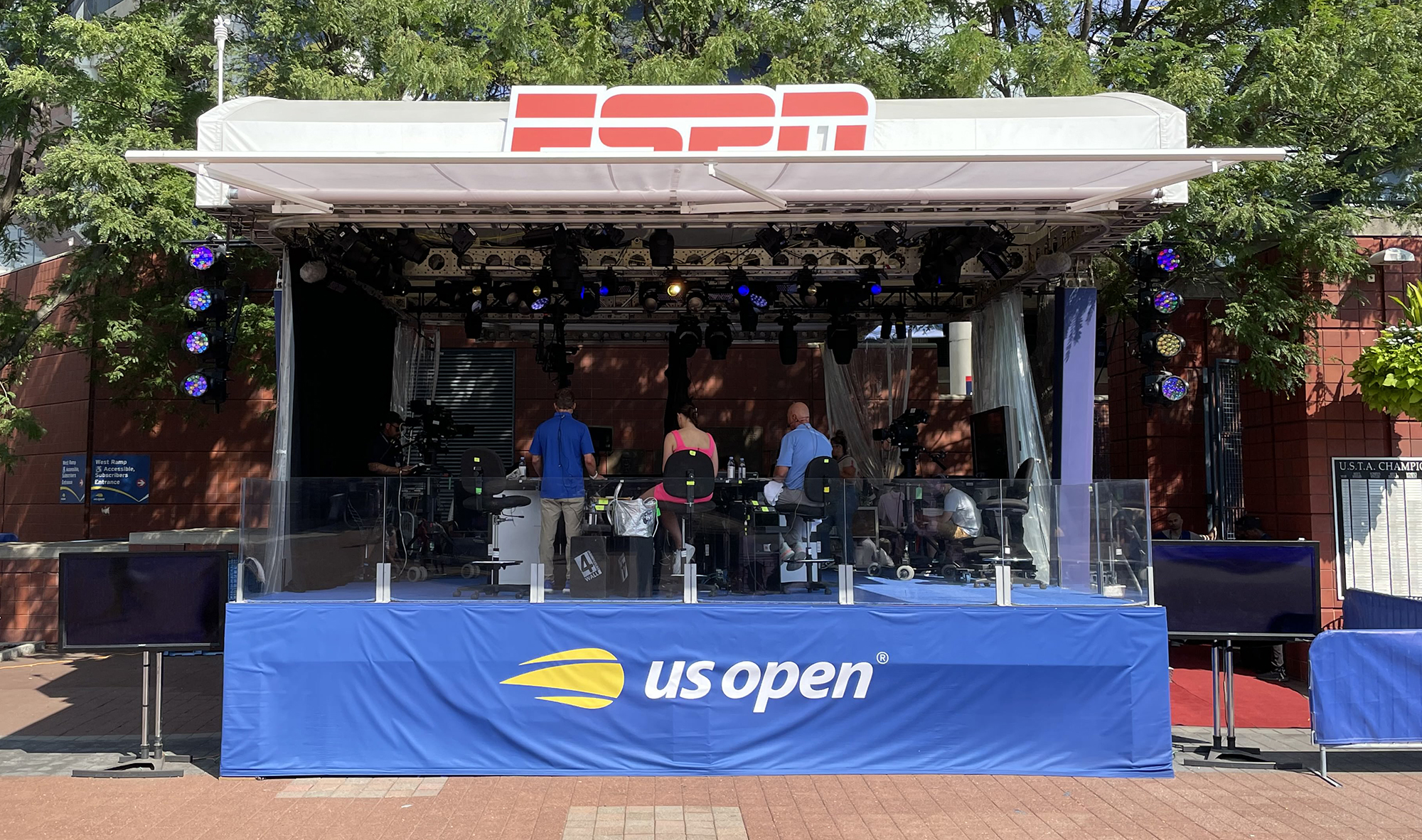
ESPN’s Fountain Plaza set at the USTA Billie Jean King National Tennis Center
After qualifiers concluded last Friday, Supershooter 9 was flipped in 48 hours to serve the ITV show on Monday. On Monday evening, NEP and ESPN had a two-hour window to flip the truck back to a linear-production setup for the ESPN2 domestic feed. Then it was back to ITV mosaic production the next morning, and they did it all again on Day 2.
“In our first two days on-air,” says Wilson, “we had 34 hours of linear broadcast between ESPN and ESPN2; that’s in addition to all the [streaming hours on ESPN+]. I think it’s impressive that we cranked out that many hours. It has been amazing to watch that truck flip back and forth between a five-output matrix show like ITV to a single-output show for ESPN2 in just a couple hours. The engineers and NEP’s team have done a great job.”
On the Ops Side: New Challenges, Opportunities in Crewing
Although ESPN has made plenty of technical leaps this year, it continues to improve its operational logistics at the Tennis Center, despite a variety of new challenges. To work one of the largest annual live sports productions in North America each year, ESPN is tasked with finding hundreds of freelancers. And, with more tennis being produced at the facility over a longer time period, ESPN (like much of the rest of the industry) has found crewing to be more challenging than ever.
“In terms of logistical challenges, crewing has to be near the top,” says ESPN Senior Operations Producer Joa O’Connor. “At ESPN, we compete against ourselves for crew with NFL, college football, and other [sports], and we also compete against [other broadcasters] to keep these people. With the [extended US Open schedule], it’s a challenge to keep people for two or three weeks at a time. But we are lucky to have returning members in every area.”
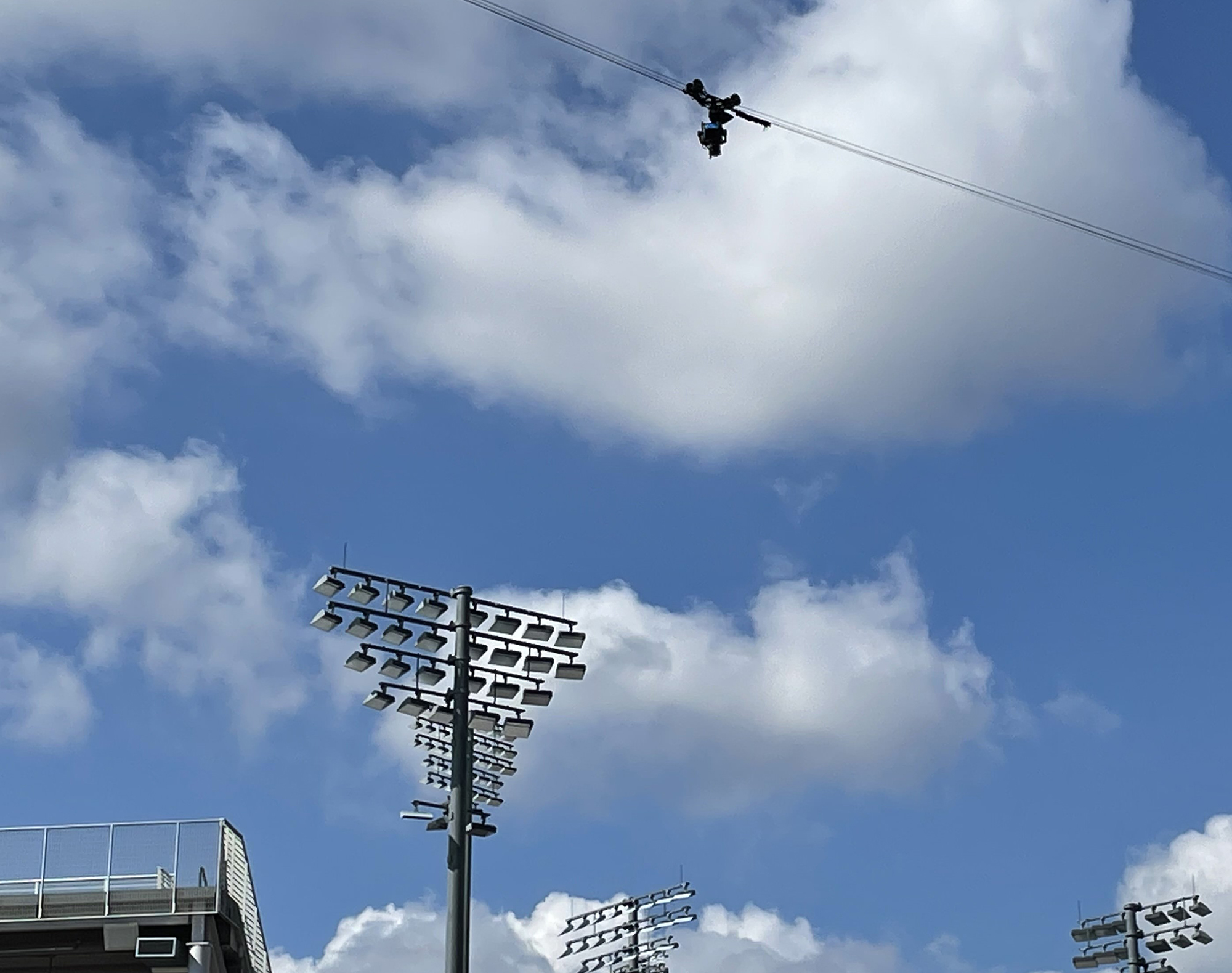
ESPN has multiple wired aerial camera systems at the US Open this year: a SupraCam (shown here) covering the grounds and SpiderCam systems at both Ashe and Armstrong.
Despite the pandemic-era challenges, O’Connor and company are grateful to be back in Queens putting on the event they love in at least somewhat normal conditions.
“Honestly,” says O’Connor, “it feels great to be at a point where we can get back to focusing on the show itself instead of everything going on around it. It has been a long road to get here after everything that has happened over the past three years, but it’s rewarding to finally be here and see the improvements.”
